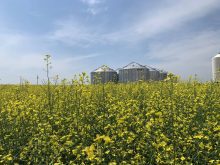Q: How do I make a crop protection plan in the off-season?
A: Developing a crop protection plan for the upcoming season in the late fall and over the winter can be a challenging process. Many in-season variables, both economic and agronomic, are difficult to account for in the off-season.
However, with a season on the horizon where crop protection products could be hard to come by, due to uncertainties in both supply chain production and retail availability, early planning will be very important. Some tools that will make this planning process easier are historical record-keeping, long-term crop planning and the advice of a trusted agronomist.
Read Also

Claas brings 1000 Series SP forage harvesters to Canada
In mid-August, Claas unveiled its new line of Jaguar forage harvesters at an event in Visalia, California, deep in the heart of that state’s dairy region.
Historical records and field knowledge go hand in hand. Intimate knowledge of prior pesticide use patterns and pest species of concern are key aspects of creating a plan that will successfully and sustainably result in higher crop production.
Pest species can fluctuate year to year, but many of the pests of concern stay consistent through the years. Pesticide-resistance issues can limit control options but with proper identification, chemical resistance can be effectively managed. Potential supply chain issues further encourage the need for multiple pest control product plans. Proper record-keeping can help growers plan for their upcoming crops by leveraging their prior cropping experiences.
Crop rotation is a critical aspect of creating a crop protection plan that is sustainable in the long term. Beyond soil and crop benefits, most crops are susceptible to different pests and a rotation can help provide a valuable cultural control. Growing a variety of crop species also allows for a wider herbicide rotation. Crops such as canola, corn and soybeans often rely on similar herbicides for weed control. Adding cereals and pulses into the crop rotation allows for increased time between applications of similar herbicides.
The best way to make a sustainable crop protection plan is to incorporate the tools outlined above in conjunction with insights from a trusted agronomic partner. Working with an agronomist can help ensure the planning process will lead to long-term, in-field success and sustainability. Agronomists have local experience working with different producers and can help prepare you for a wide variety of in-season variables.
– Jordan Peterson, PAg, CCA, is a manager of agronomic solutions with Nutrien Ag Solutions in northern Alberta.















